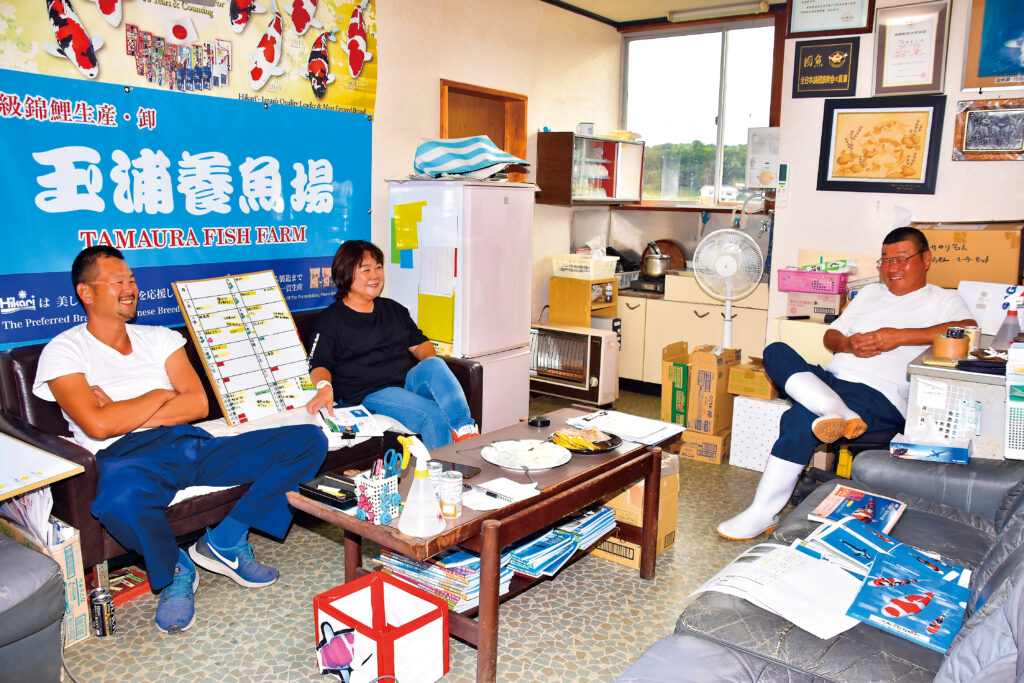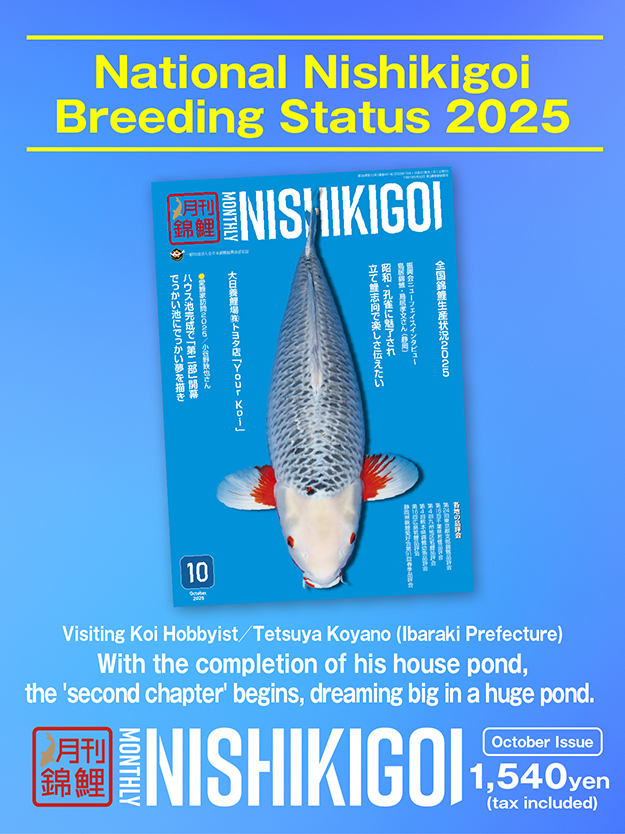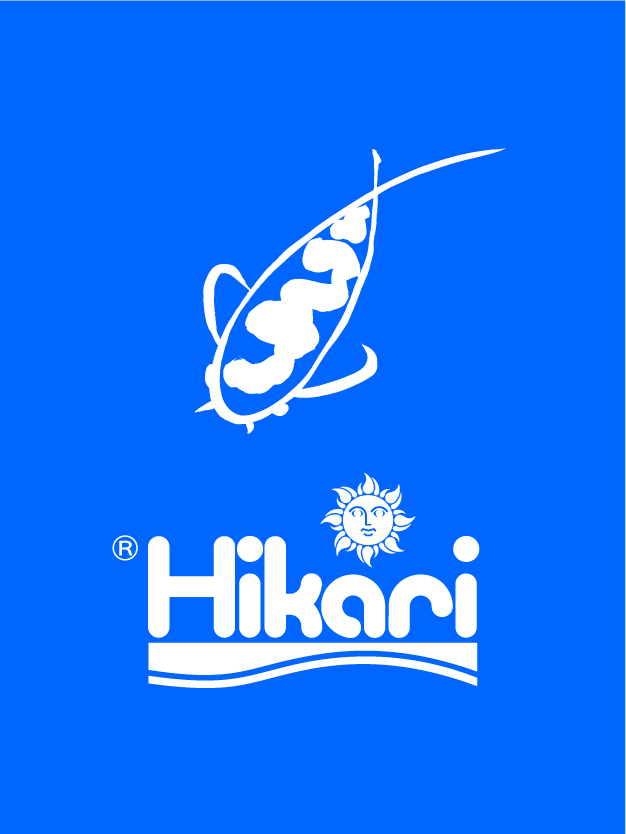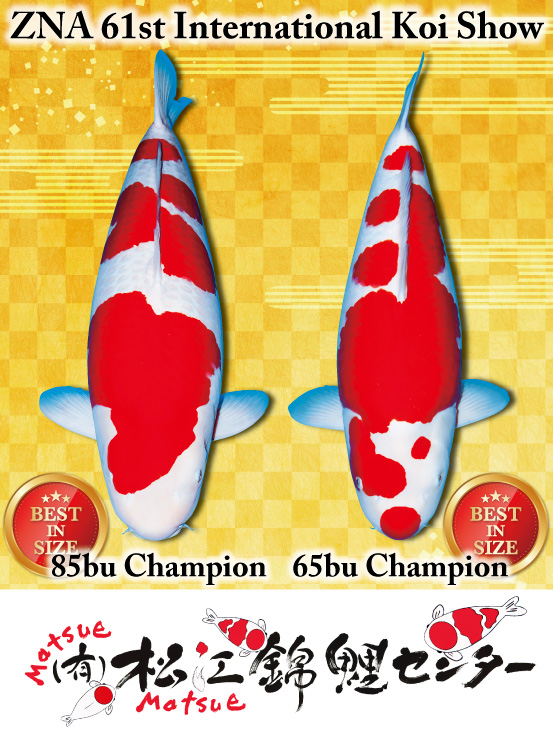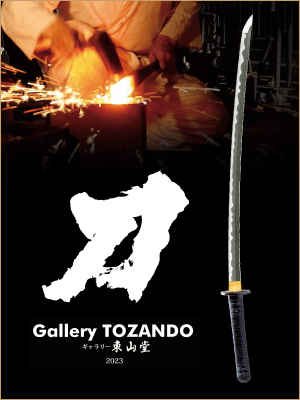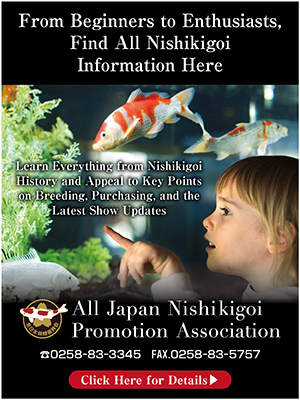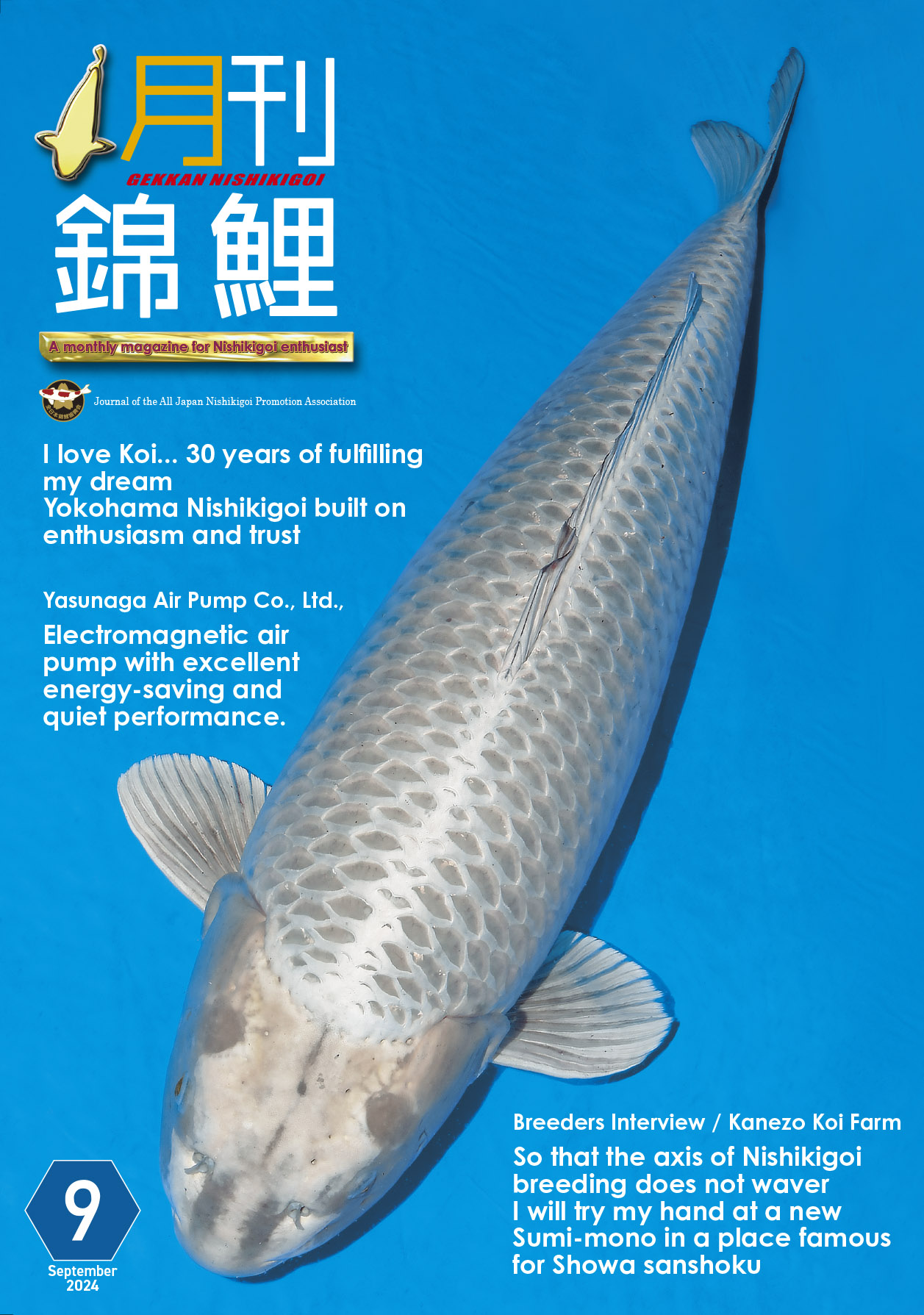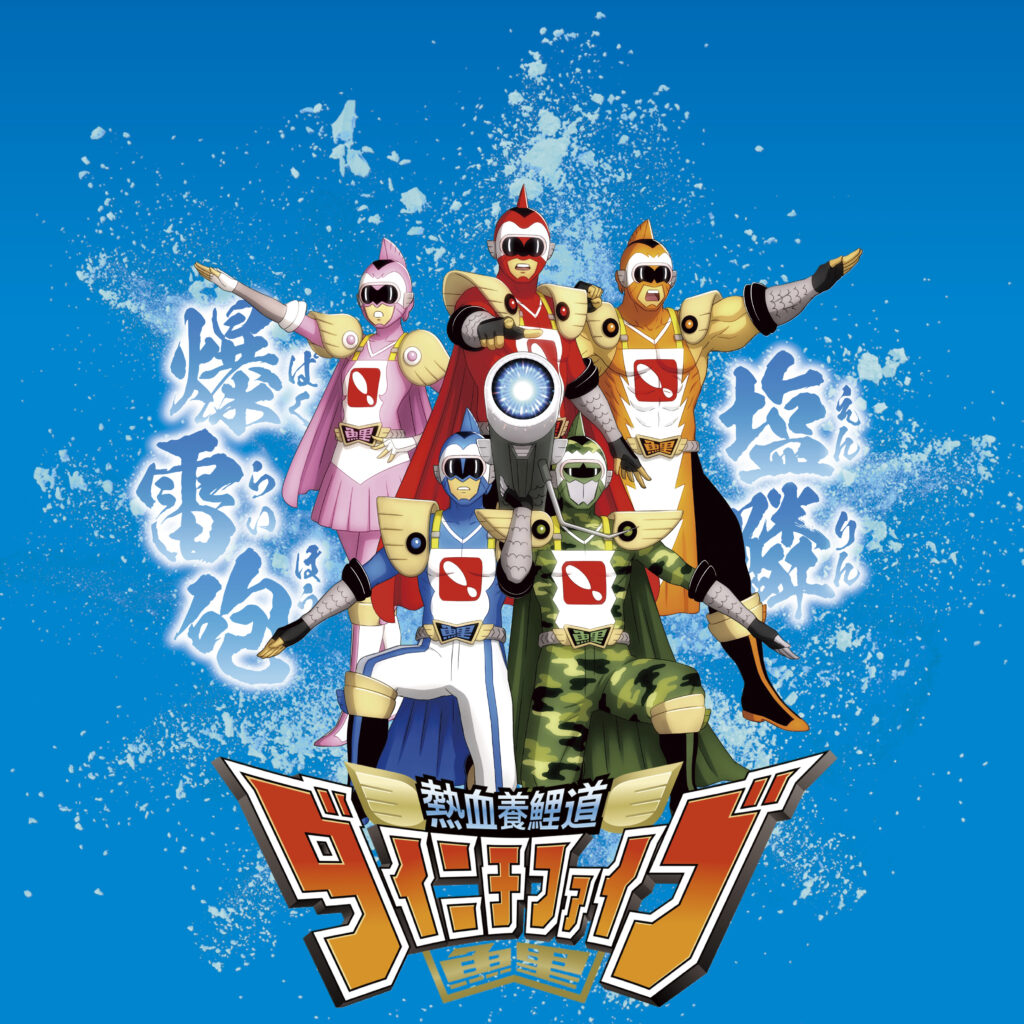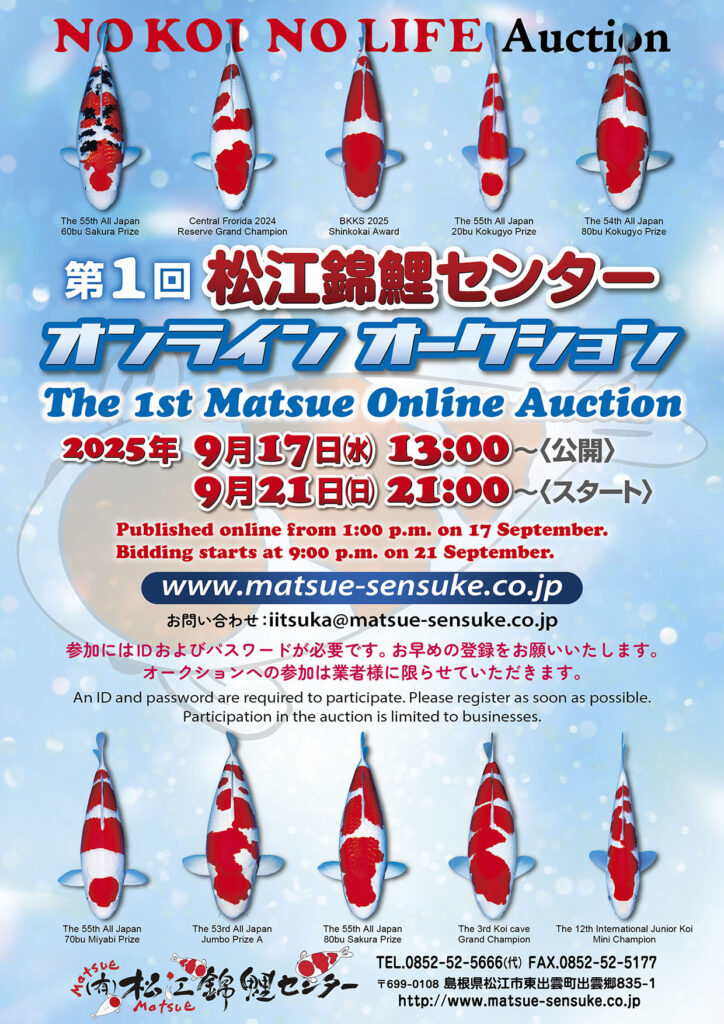The fish fry pond has shifted its focus from quantity to circulation.
Although diseases have brought distress, help has been received from friends nearby.
ー During a previous interview, you mentioned that you were breeding gosanke, shiro-utsuri, shusui, and kumonryu. What is your current lineup?
Tamaura: This year, we have 9 spawns of sanshoku, 3 spawns of kohaku, 3 spawns of showa, and 1 spawn of kumonryu. Back then, we only had 3 spawns of sanshoku, so in terms of the number of spawns, it has increased quite a bit.
ー Is that because you want to try out several test spawns?
Tamaura: Yes, for testing and as a safety net. So, we breed a lot of these and these varieties, and just a little bit of the others. In our case, we go through three breeding cycles in one season, which means our rearing period is much shorter compared to others. Since the patterns aren’t very clear at this stage, there are a lot of koi that are really hard to figure out. Even during culling, we often find ourselves saying, “We really can’t tell.” Especially with the first cycle’s sanshoku, they are particularly difficult to judge.
ー Nowadays, more and more people are releasing fry into the ponds and waiting about 45 days before selecting, right?
Kuninori: In the industry, the trend is to extend that period. It’s also said that it makes the koi stronger. But we believe in harvesting as much as possible and moving quickly to the next batch.
ー I see. Each koi farm has its own methods.
Tamaura: We usually start the first batch after Golden Week and have the first selection around mid-June. At that time, we harvest the second batch so that we can put the fry into the ponds that have been emptied by the selection.
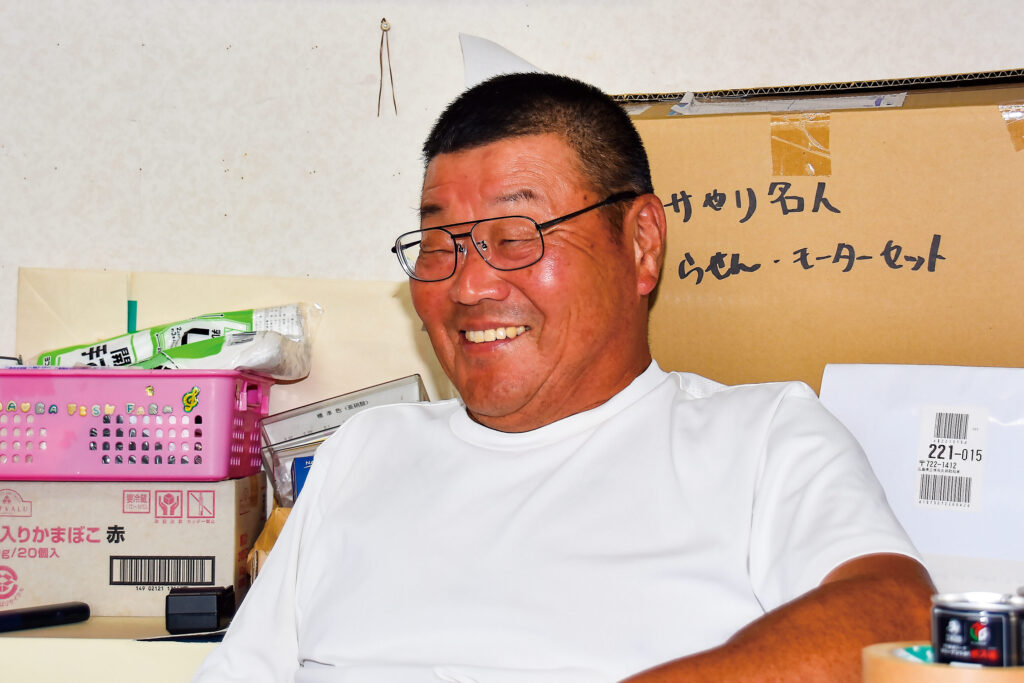
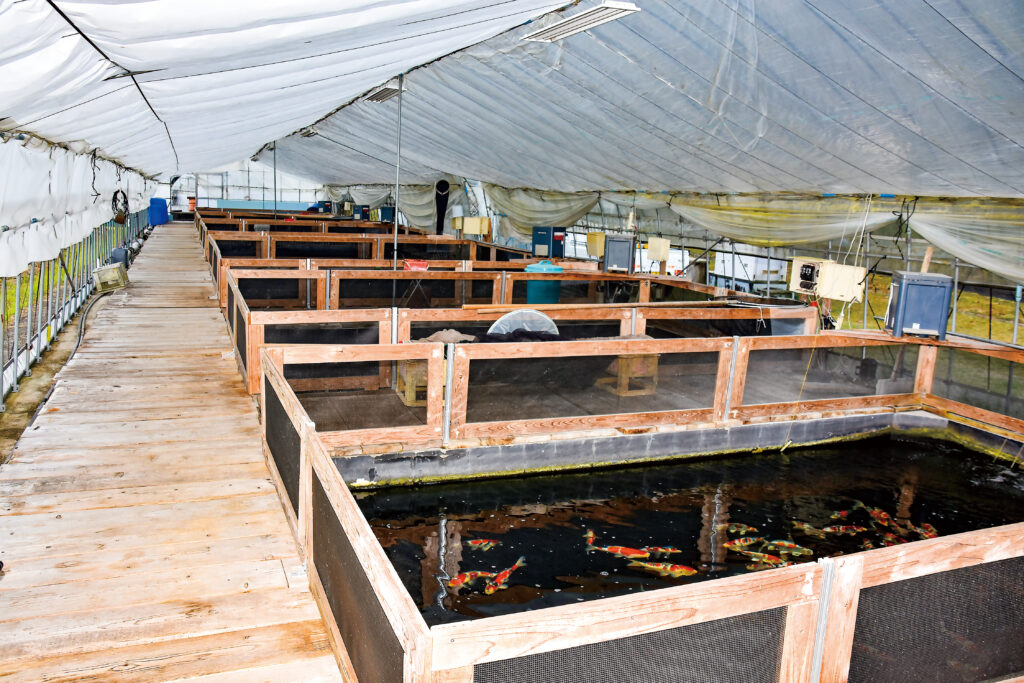
ー So, you time your harvests to ensure the ponds don’t stay empty while you’re selecting, right?
Tamaura: If the spawning is delayed, the ponds stay empty for several days, which is a waste. For us, the second batch is crucial. Even though it’s the rainy season, the climate is stable.
ー Stable temperatures help the fry grow better.
Tamaura: If we wanted to, we could go up to four batches. We set the first batch in early May and can release fry until the first week of August. As the temperature rises, the selection timing gets earlier, so we can select about 20 days after putting them in the pond. This way, we can prepare to put the fry in as soon as we pull the nets.
ー It’s quite a tight schedule, isn’t it?
Tamaura: Yes, so it’s absolutely essential that they hatch on this specific day. Therefore, rather than choosing parent koi that I personally want to use, I prioritize those that are certain to spawn.
ー Even if there’s a koi that I really want to breed, if there’s any risk that it might not spawn, it could disrupt the entire schedule, right?
Tamaura: Exactly. The schedule is the top priority. But I feel like if we stick strictly to that, we might not end up with the best quality. So now, even with triple cropping, we don’t push it to the limit and instead do it partially without overdoing it.
ー Does spawning during the hot season go well?
Tamaura: We usually do the third cropping around the latter half of July, so it’s starting to get hot, but the parent koi can still manage just fine.
Kuninori: It’s really cutting it close. If it were just one week later, it might be a bit too tough. Even if they do spawn, it could be problematic.
Tamaura: They do spawn, but the fertilization rate might be low, leading to no hatching, or even if they hatch, they might not survive.
ー Is the production limited to three cycles due to the constraints of the fry ponds? Are there any plans to increase them in the future?
Tamaura: Generally speaking, the more fry you have, the easier it is to cultivate high-quality koi. So, other producers might be increasing the number of ponds, but this entirely depends on whether there is enough manpower. If we can’t manage them properly, even putting fry into the ponds won’t lead to success. Therefore, we have reduced the number of fry ponds and instead focused on increasing production by efficiently utilizing the limited ponds we have.
ー So, instead of increasing the number of fry ponds to boost the quantity of fry, you are enhancing production by efficiently using the limited ponds and manpower, right?
Tamaura: Yes. At our peak, we had about 50 ponds, but now we’ve reduced them to 34. Even among wild ponds, there are various types, and we have gradually phased out those that are time-consuming and labor-intensive but yield poor returns.
ー Compared to the peak, that’s quite a reduction.
Tamaura: Back then, it felt like we could succeed just by putting fry into the ponds, whether there were daphnia or not (laughs). Now, it’s different. We strive as much as possible to cultivate daphnia. We believe that rotating through wild ponds that are easier to manage yields better results.
Kuninori: We prefer to focus on how to increase the numerator while reducing the denominator, enhancing efficiency. This is a topic we constantly discuss.
